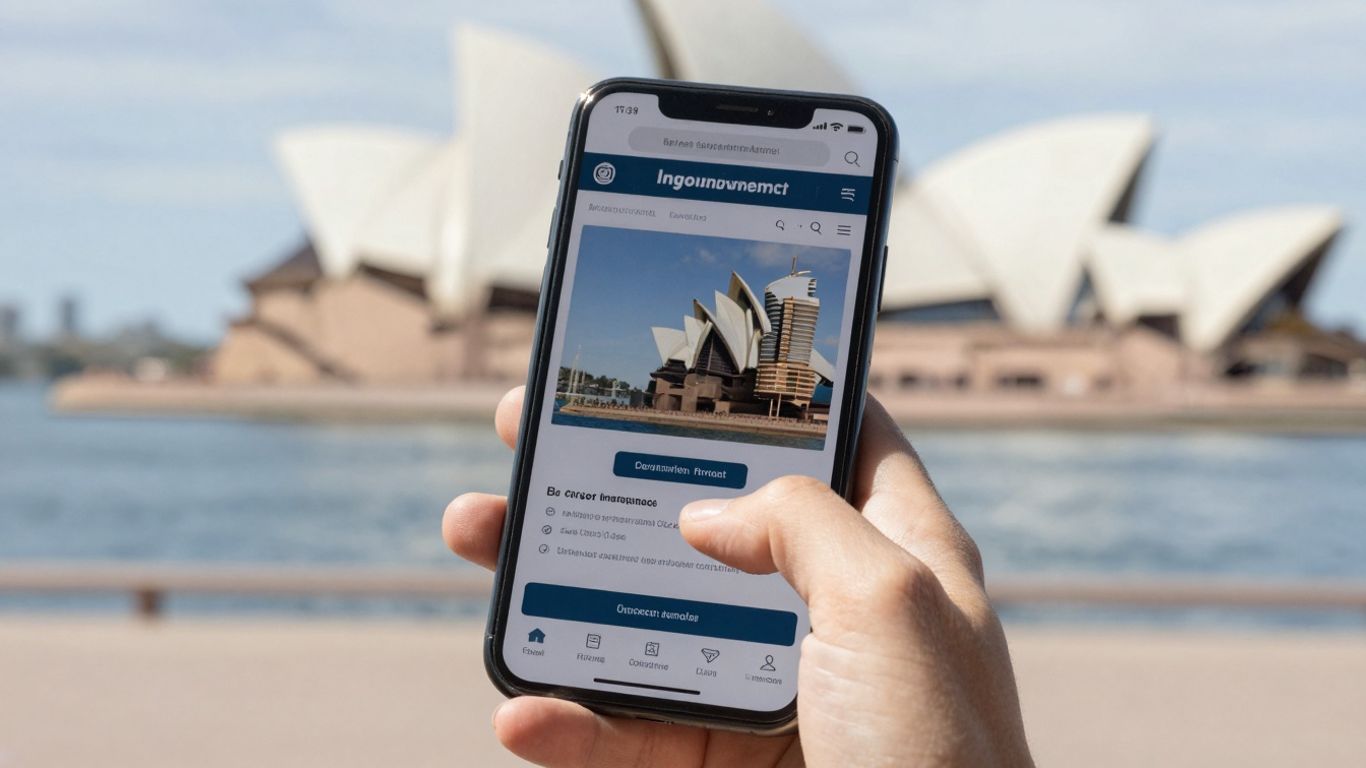Finding not-for-profit grants in Victoria can feel like looking for a needle in a haystack. There are heaps of options out there, but figuring out where to start, what you need, and how to actually get your hands on some funds is another story. This guide breaks down the basics of not-for-profit grants in Victoria, where to look, how to get your organisation ready, and what to watch out for during the application process. Whether you’re new to grants or just want to sharpen your approach in 2025, you’ll find practical tips and a few honest truths about what works (and what doesn’t).
Key Takeaways
- Not-for-profit grants in Victoria come from many sources, including government, councils, and private groups. Each has its own set of rules.
- Getting organised before you apply—like sorting your mission statement and collecting supporting documents—makes the whole process much smoother.
- Government websites like Business.gov and GrantConnect are good starting points, but don’t forget to check with your local council and community foundations.
- Writing a clear, honest application that shows your real impact on the community increases your chances of success.
- Keeping up with reporting and staying transparent with your community is just as important as winning the grant in the first place.
Understanding Not-For-Profit Grants In Victoria

Grants can be a lifeline for not-for-profits, especially in Victoria where the community sector is busy and highly active. If you’re new to finding funding, or even if you’ve been around for a while, knowing how grants work is one of those things that pays off long-term. Let’s get stuck into the details, so you’re not left wondering where to start or what hoops you’ll need to jump through.
What Sets Not-For-Profit Grants Apart
Not-for-profit grants are a bit different to regular business grants or commercial support. The main goal here is to boost projects that benefit communities rather than pump up profits. Some of the main points that make these types of grants unique:
- Money can’t be used for personal or business gain; it’s for community outcomes only.
- Most programs demand proof about how funds will be managed and reported on.
- Grant applications often ask how your project helps a specific group or solves a clear local problem.
- Some grants focus only on certain sectors, like health, youth, or arts, rather than just broad “good works.”
Grants for Victoria’s not-for-profits are more about filling gaps for everyday people than making anyone richer.
Types Of Funding Available
There isn’t just one kind of grant floating around out there — you’ll see plenty of variety. If you look around (yes, it’s one of those endless Google search situations), you’ll bump into these types:
| Funding Type | Typical Use | Amount Range |
|---|---|---|
| Project Grants | Pilot programs, short-term projects | $2,000 – $100,000+ |
| Operational Funding | Running day-to-day organisation | $10,000 – $250,000+ |
| Equipment/Infrastructure | Computers, fit-outs, building works | $2,000 – $500,000+ |
| Capacity Building | Staff training, planning, governance | $1,000 – $50,000 |
| Event Grants | Festivals, conferences, awareness | $1,000 – $50,000 |
You might also see special funding from philanthropic private sector grants focused on areas like children, cultural inclusion, or community resilience. These can help fill the gaps not always covered by government money.
Key Eligibility Criteria
Before you get your hopes up, it’s worth checking if you tick all the key boxes for the grant you want. Most granting bodies don’t budge much on these basics:
- Your organisation must be legally registered as not-for-profit in Victoria.
- The proposed project has to serve a public or community benefit, not individual gain or a small clique.
- Proper financial management and transparent record-keeping – can’t fudge the numbers or miss receipts.
- Sometimes your project must meet geographic, sector, or demographic requirements (e.g., only for regional Victoria, or people aged 12–25).
Some grants also want evidence you have experience to pull off the proposed project, or that you’ll find matching funds from somewhere else.
A bit of paperwork is just part of the deal, but missing a basic eligibility rule can sink your chances before you even start. Make sure you’ve read every line of the criteria before you spend days on an application.
Where To Find Not-For-Profit Grants In Victoria
Looking for grants can sometimes feel like hunting for a needle in a haystack. There are heaps of options out there, especially in Victoria, but figuring out where to start is often the hardest part. Here’s how you can make sense of it all and find the funding streams that suit your not-for-profit best.
Government Online Grant Finders
Most not-for-profits get their start by looking at online platforms set up by federal and state governments. These sites let you tailor your searches by area, grant type, and even specific community focus, which makes things a bit less overwhelming.
Main government grant finders for Victoria:
- GrantConnect (www.grants.gov.au): Australia-wide but with handy filtering tools so you can zero in on Victorian opportunities.
- Victorian Government Grants Gateway: Directs you to state initiatives, ranging from small community grants to larger project-based funding.
- Business.gov.au Grants Finder: While it’s broader, it includes a section for NFPs and community groups.
Here’s a quick comparison of the top portals:
| Grant Finder Tool | Focus Area | Filters for NFP? | Link |
|---|---|---|---|
| GrantConnect | Federal gov’t programs | Yes | grants.gov.au |
| Vic Grants Gateway | State funding (Victoria) | Yes | vic.gov.au/grants |
| Business.gov.au Grants Finder | National, including VIC | Yes | business.gov.au/grants |
Take the time to set up alerts and email notifications on these platforms so you never miss a new round opening up.
Local Council Initiatives
Plenty of Victorian councils offer their own grants for things like events, neighbourhood projects, and environmental schemes. These tend to be more local, but the pots are often less competitive than state or federal money.
Try this approach:
- Head to your council’s website and search for a “Grants” or “Community Funding” tab.
- Attend council meetings or grant info sessions—these often reveal details you won’t find online.
- Sign up for local council newsletters or updates. Grant rounds open and close quickly.
Some councils will even help guide you through their application process—don’t be shy to call or email for advice.
Philanthropic And Private Sector Opportunities
There’s money out there from more than just government. A bunch of philanthropic foundations, trusts and even local banks run annual or rolling grant rounds. Their guidelines and requirements shift from year to year, so it pays to regularly check in.
Notable options include:
- Australian Communities Foundation
- The Sidney Myer Fund
- Bendigo Bank Community Grants
- Greater Bank Grants
- Vincent Fairfax Family Foundation
Useful tips:
- Subscribe to newsletters from the major Australian philanthropic foundations.
- Join mailing lists for free services like Community Grants Hub or search paid databases if funding is your main gig.
- Watch for themed grant rounds: health, youth, sport, environment, education, seniors—these rotate all the time.
The main thing is: diversify where you look. Government, council, or philanthropic, don’t just stick to one channel. The more sources you know about, the better your odds of finding exactly what your group needs.
Preparing Your Organisation For Grant Success

Getting ready to apply for grants can feel a bit like getting your house in order before having guests over. There’s tidying up to do, papers to find, and you’d better be ready to explain yourself when the hard questions come up. If you’re not prepared, things can slip through the cracks fast. Here’s how to get your organisation properly set up for success.
Strengthening Your Mission Statement
A clear, believable mission statement is the centrepiece of any good grant application. It should explain, as simply as possible, what your organisation stands for and why it matters. Before you go for funding, take a moment to:
- Check that your mission statement reflects what you’re actually doing now—not what you said five years ago.
- Make sure everyone in your team can summarise it easily.
- Use real-life examples of your work to show what your mission looks like in action.
A well-known purpose gives funding bodies confidence that you’ll actually follow through with what you promise.
Gathering Supporting Documentation
You won’t get far with just nice words—paperwork is everything. Funders expect evidence and details. Collect these basics before you even start:
- Up-to-date financial statements (income, expenses, assets).
- The latest annual report.
- List of board members/trustees and their roles.
- Certifications, registrations (like your Incorporation Certificate or ACNC details).
- Insurance policies (public liability, volunteer cover, etc.).
- Evidence of any past grant use (reports or letters from other funders).
Keeping these in a folder—digital or paper—will save headaches later.
Demonstrating Community Impact
Grantmakers want proof that their money does more than just keep the lights on. Paint a picture with facts and stories. Try outlining your impact using a simple table if you can:
| Year | People Helped | Programs Run | Community Events Held |
|---|---|---|---|
| 2022 | 120 | 5 | 2 |
| 2023 | 180 | 7 | 4 |
A few tips:
- Use numbers and stories together. Stats show growth; stories show real change.
- Collect feedback and testimonials regularly. Store them somewhere you can find when you’re on a deadline.
- Stay honest about gaps. Funders respect realism over fairy tales.
Even small wins count. If you’ve made someone’s day better, that’s worth writing down.
Navigating The Grant Application Process
It’s normal to feel a bit stressed about grant applications, but honestly, once you break it down, the process isn’t so wild. Below, I’ll lay out some straightforward steps and share tips I’ve picked up after seeing a few not-for-profits either land the funding or crash and burn (not literally, but you know what I mean).
Key Steps In Completing Applications
- Read the guidelines – twice. It sounds simple, but lots of people skip important bits, like the ineligible activities section.
- Make a checklist of every document and piece of info they want: insurance details, budgets, incorporation certificate, etc.
- Draft your answers offline first. It’s so much easier to catch mistakes and polish your pitch outside the online portal.
- Prep supporting materials ahead of time (letters of support, recent reports, financial statements).
- Upload and review before clicking submit. Most portals don’t let you edit after.
Don’t rush through or rely on copy-paste from an old application — even small errors can knock you out before anyone reads about your good work.
Tips For Writing Strong Proposals
Writing a strong proposal isn’t about flowery language — it’s about making life easy for the person reading it. Here’s what actually matters:
- Use plain English and short sentences.
- Focus on what your project does for the local community — give examples, not just big-picture statements.
- Tie your project to the funding body’s priorities. If their website is full of ‘inclusion’ or ‘youth engagement’, mention how your project does those things.
- Show how your budget lines up with your activities. If you say you’ll run six workshops, make sure the budget matches that.
- Use data if you’ve got it (number of participants, percentage of impact, etc.), but keep it clear.
If you want more practical pointers, these tips for writing a successful grant application always help sharpen up a proposal.
Common Mistakes To Avoid
It’s weird how often some of these crop up, but trust me, you’ll be ahead of half the pack if you dodge these:
- Missing the deadline (set reminders — grant portals close down right on the dot).
- Not matching your answers to the assessment criteria.
- Using jargon that confuses rather than explains.
- Forgetting to upload documents or sending outdated versions.
- Overpromising — if your project claims to solve every problem under the sun, assessors will see right through it.
| Mistake | What Could Happen |
|---|---|
| Missed deadline | Your application isn’t looked at |
| Missing documents | Application is ineligible |
| Unclear project goals | Assessors lose confidence |
| Overstated outcomes | Project looks unrealistic |
Taking the extra half an hour to double-check your application is far better than missing out because of something small. A little prep goes a long way when you’re up against other groups after the same funding.
Compliance, Reporting And Accountability For Grant Recipients
Staying on top of the rules after a grant is awarded might not be as exciting as getting the money in the first place, but it’s the bit that keeps everything running smoothly and keeps funders happy. If your organisation wants to keep winning grants, getting compliance and reporting right isn’t optional—it’s the backbone of your reputation.
Financial Record-Keeping Requirements
Accurate finances show funders you can be trusted. You’ll need to:
- Keep receipts and invoices for every expense related to the grant, even the small stuff.
- Use a separate bank account or set up unique account codes for each project, so the books never get muddled.
- Update your financial records regularly, not just at reporting time.
| Financial Record | Minimum Retention Period | Notes |
|---|---|---|
| Receipts & Invoices | 7 years | Must be originals |
| Bank Statements | 7 years | Keep digital back-ups |
| Project Budget Reports | 7 years | Should show variances |
Not keeping accurate financial records can put future funding at risk and may even mean having to repay grant money.
Understanding Reporting Obligations
Reporting isn’t just filling out a form once a year. Funders often want:
- Interim progress reports showing how things are tracking halfway through the grant.
- Final reports with outcomes, photos, and evidence when the project finishes.
- Sometimes, follow-up reports a year or two later about lasting impact.
These might cover
- Project outcomes (what you did and who benefited)
- Stories from people involved
- Challenges faced and lessons learned
Review your grant agreement for exact dates and formats—missing a deadline can slow down payments or block future grants.
Maintaining Community Transparency
Making your activities clear and easy to understand builds trust, not just with funders but with your community. Think about:
- Publishing an annual report or summary online, so everyone can see what the grant achieved.
- Holding community meetings or giving presentations about your results.
- Encouraging feedback and responding openly to questions or criticism.
Clear and open communication can be the difference between a one-off grant and long-term community support.
Getting these things right isn’t flashy, but it means you’ll be in a good place to apply for more support in future years—and your community will back you too.
Building Relationships And Partnerships To Boost Grant Opportunities
Building solid partnerships isn’t just a nice-to-have – if you’re looking for not-for-profit grants in Victoria, you need others in your corner. Getting funding is competitive these days, but connecting with local organisations, showing funders you’re active in your community, and getting people on board can make all the difference. Let’s break down how you can really make those connections count.
Collaborating With Local Organisations
It’s no secret: working with other local organisations can open doors you didn’t even know existed. Maybe there’s a community group running a similar project, or a sports club in the same suburb. Combining your efforts can make your grant application stronger – and sometimes big funders actually expect to see joint projects.
- Identify like-minded not-for-profits or community groups with overlapping goals.
- Set up informal catch-ups to share what you’re working on and see where things cross over.
- Jointly apply for grants that specifically favour partnerships – these get flagged as more sustainable by many funders.
- Keep communication easy, and focus on small wins first, like sharing resources or co-hosting events.
When you work as a team, not only do you avoid duplicating efforts, but you also show grant panels that you’re plugged in where it counts.
Engaging With Funding Bodies
Talking to the people behind the grants isn’t just for the ultra-confident types. Grant managers at councils, private funds, or new home grant programs like First Home Buyer incentives are people, too. You can:
- Attend grant info sessions, even if you’ve done a dozen before. Sometimes, you hear about extra funding rounds or pilot programs.
- Ask clear, direct questions via email or phone if you don’t understand criteria or need to check your eligibility.
- Give honest feedback to funders when asked – it shows you’re engaged and invested, and they’ll remember you next time around.
Funders often prefer supporting organisations they know and trust, so never underestimate the value of a well-timed conversation or a thank-you note after a session.
Leveraging Community Support
Community backing isn’t just about warm fuzzies – it’s something you can quantify and showcase in your application. Here’s how you can put this into action:
- Get letters of support from partner groups or respected local figures.
- Run events or online campaigns to show locals are involved and invested (petitions or pledges work, too).
- Share updates with your audience and highlight how the grant will benefit the community at large.
Table: Types of Community Support You Can Demonstrate
| Support Type | How to Collect/Showcase |
|---|---|
| Letters of endorsement | Gather from key local stakeholders |
| Volunteer sign-up numbers | Include volunteer count in reports |
| Social media engagement | Screenshot positive engagement |
| Pledges or petitions | Submit totals or physical copies |
If you show funders that your community is backing your plans, it can tip the scales in your favour. After all, grants are meant to benefit locals most, so putting their voices front and centre just makes sense.
Exploring Alternative Funding To Complement Grants
Securing a grant is fantastic, but it often leaves not-for-profits wanting another revenue stream to truly keep projects moving. It’s actually very common for community organisations to seek other types of funding to stay afloat or kickstart new ideas. These funding options—like earning membership fees, running a fundraiser, or harnessing the power of online supporters—can sit neatly beside your grant income.
Member-Focused Revenue Streams
Membership programs can be a steady source of funding and help bring people closer to your mission.
- Charge annual or monthly membership fees, scaled by student, pensioner, or corporate rates.
- Offer perks like early event access or exclusive newsletters—small incentives can boost sign-ups.
- Involve members in decisions or direction, deepening engagement and making renewals more likely.
When people feel invested, they’re more than just members—they often become your best champions and informal fundraisers, too.
Fundraising Ideas For Not-For-Profits
The best fundraisers often have a community feel, but don’t overthink it. Here’s a quick run-down:
- Host a themed trivia night or sausage sizzle at your local community hall.
- Organise a silent auction with donated goods or services from supportive businesses.
- Sell merchandise—badges, t-shirts, or calendar prints—that highlight your group’s activities.
Not-for-profits in Victoria may also want to keep an eye out for changing trends in fundraising, like the increasing use of contactless payments and online ticketing. If tech inspires you, the recent boom in Australian startups shows there’s real potential in doing things a bit differently.
Developing Crowdfunding Campaigns
Crowdfunding can take one good story and put it in front of thousands. A few key points to help you succeed:
- Choose the right platform (Pozible, GoFundMe, or Chuffed are popular with Aussies).
- Keep campaign goals realistic—break down what funds will achieve, step-by-step.
- Use videos and regular updates to keep donors in the loop.
| Platform | Typical Fee Structure | Best For |
|---|---|---|
| Pozible | 5% platform fee | Creative/community ideas |
| GoFundMe | No platform fee (donations encouraged) | Personal/cause-based fundraising |
| Chuffed | 0% platform fee (optional tips) | Social good/nonprofits |
Remember, honesty and a human touch in your campaign storytelling make all the difference—folks are more inclined to help when they see the real impact.
Alternative streams can make a huge difference—sometimes just a few hundred dollars from membership or a single fundraiser bridges a gap that a grant can’t fill. Combining different income sources puts you on much more stable ground year to year.
Wrapping Up: Your Next Steps for Grant Success
Alright, so that’s the lowdown on finding and applying for not-for-profit grants in Victoria. It might seem like a lot at first, but once you get the hang of searching on sites like Business.gov or GrantConnect, it gets easier. Don’t forget to check out your local council’s website too—sometimes the best grants are right in your backyard. And if you hit a wall, there are always community hubs and even banks that throw their hat in the ring with funding now and then. The main thing is to keep at it, read the fine print, and don’t be afraid to ask questions if something’s unclear. Every grant application is a bit of a learning curve, but with each one, you’ll get better at it. Good luck, and here’s hoping your organisation gets the support it needs to keep doing great work in 2025 and beyond.
Frequently Asked Questions
What is a not-for-profit grant?
A not-for-profit grant is money given by the government, local councils, or private organisations to help not-for-profit groups run projects or provide services. You don’t have to pay this money back.
Where can I find grants for my not-for-profit group in Victoria?
You can look for grants on government websites like Business.gov.au and GrantConnect. Local councils also offer grants, and some banks or foundations support community projects too.
What do I need to apply for a grant?
Usually, you’ll need a clear mission statement, proof your group is a not-for-profit, details about your project, and some documents that show your group is managed well, like financial records.
How can I make my grant application stronger?
Make sure your project clearly helps the community. Write simply and honestly about what you plan to do. Include facts or stories that show why your project matters.
What happens if my group gets a grant?
If you get a grant, you must use the money for the project you said you would do. You’ll also need to keep good records and report back to the grant provider about how you spent the money and what you achieved.
Are there other ways to get money besides grants?
Yes! You can raise money through membership fees, hold fundraising events, or even try crowdfunding online. These can help your group have more money for its work.





